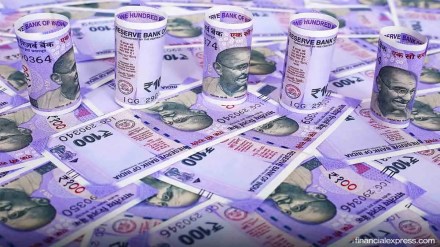The government’s total liabilities touched Rs 147.20 trillion at the end of September, up 1% from the previous quarter, the finance ministry said on Tuesday.
According to the ministry’s quarterly report on public debt management, at Rs 131.15 trillion, public debt made up 89.1% of the total liabilities at the end of September, compared with 88.3% as of June 30.
The report stressed that the rollover risk in dated securities portfolio remains “low”. The proportion of debt maturing in less than one year was just 2.87% at the end of September, against 4.14% as of June 30. Similarly, debt maturing in the next five years worked out to 29.6% of gross outstanding debt at the end of September. This means only 5.92% of outstanding stock, on an average, needs to be repaid every year over the next five years, it said.
The central government raised Rs 4,06,000 crore through dated securities in the second quarter, lower than the Rs 4,22,000 crore notified in the borrowing calendar; repayments were to the tune of Rs 92,371 crore.
Thanks to the frequent hikes in the repo rate since May (by a total of 190 basis points to 6.25%) to tame inflation, the weighted average yield of primary issuances inched up to 7.33% in the second quarter from 7.23% in the June quarter. The weighted average maturity period of new issuances of dated securities was marginally lower at 15.62 years in Q2, against 15.69 years in Q1.
Given the robust tax collection and compression of certain revenue expenditures, the central government did not raise any amount through cash management bills in the second quarter to tide over temporary mismatch in cash flow, just like in the previous quarter.
The report suggested that market liquidity conditions remained in surplus during the September quarter, barring a deficit for five days. The net average daily liquidity absorption by the central bank — including the marginal standing facility, standing deposit facility and special liquidity facility — moderated to Rs 1,28,323 crore in Q2FY23 from as much as Rs 4,54,728 crore in Q1FY22. “Factors such as GST and advance tax payments along with forex outflows contributed towards moderation in liquidity surplus conditions particularly in the third week of September,” the report said.
The yields on government securities in the secondary market hardened in the short-end curve due to near-term inflation and liquidity concern, though softening of yield was observed for the longer tenure securities during the second quarter, the report added.
The ownership pattern of the central government securities indicates that the share of banks remained high at 38.3 at the end of September, against 38.04% in the previous quarter. However, the share of insurance companies and the RBI dropped from 26.3% and 16.06%, respectively, at the end of June to 25.9% and 15.3% as of September 30.
